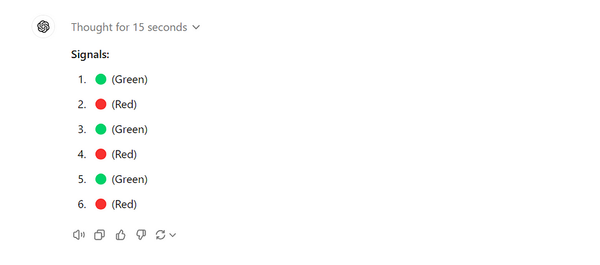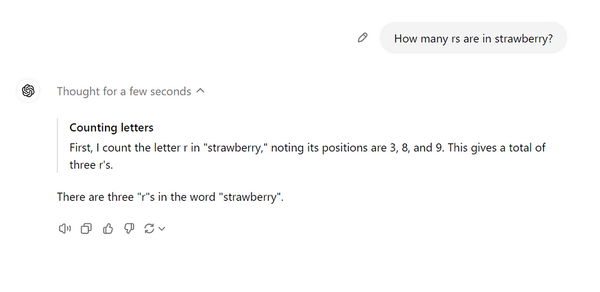Deep Dive: ChatGPT 4o with Canvas – Coding and writing with the new ChatGPT

OpenAI’s continued quest to render all of us redundant has a new release: ChatGPT 4o with Canvas. 4o with Canvas adds an interactive sheet to the ChatGPT UI, iteratively collaborating with the user and introducing an array of coding and writing-specific features.
And it’s admittedly pretty impressive.
To test it out, I decided to:
- Perform one LeetCode task.
- Write one social media post.
4o with Canvas: LeetCode
LeetCode is a compilation of problems that programmers use to sharpen their skills. I selected a problem of hard difficulty – in a language that I don’t actually know.
(Luckily, LeetCode lets you test your code without submitting it — so I’m not throwing off the metrics for human programmers. Although, I’m sure this is already happening on its own.)
I copied over the above instructions and ChatGPT returned an interactive, collaborative code sheet — new to the Canvas model.
When expanded, this code sheet is actually pretty interesting – but we’ll talk about that in a second. First, did the solution even work?
It did! Caveat: Because this is a LeetCode question, you could argue that there are tons of solutions on the web – making this an inherently easier problem to solve than, for instance, a novel one.
But when you consider how much of programming today is truly novel and how much is “add this CTA button,” I feel somewhat comfortable with this test.
Now, let’s go back to the Canvas…
It’s essentially an IDE, but an IDE envisioned by someone trying to hasten the inevitable adoption of universal basic income by steadily putting upward pressure on unemployment rates.
There are five features: Code review, Port to a language, Fix bugs, Add logs, and Add comments.
Code review
It’s kind of whimsical to ask ChatGPT to review the code that it just wrote – “are you sure about that?” Code review goes over the code to find areas in which it could potentially be optimized, adding comments as it goes – and it’s pretty cool to see it happen in real-time, even as you start to see the red encroaching at the sides of your vision.
You can directly apply these code changes as well, with the click of a button:
Port to a language
Here, 4o will translate code into PHP, C++, Python, JavaScript, TypeScript, or Java. I tried JavaScript and, what do you know, it worked:
Fix bugs
Fix bugs scans your code for any errors. I decided to take a semi-colon out to see what it would do. It actually did find that error as well as optimized a small piece of code:
Add logs
The add logs function does what we all do in our spare time – add console.log commands for traceability at every possible step.
Add comments
And finally, you can automatically document your code:
Conclusion
4o with Canvas: Social media posts
I have something to confess: I hate LinkedIn. Always have, always will. At one point, it was a useful tool for sharing job-related experiences. Now, it’s where we go to roleplay the success we wish we had.
But that’s not important right now.
Writing social media with Canvas
So, I gave ChatGPT this blog post – and asked it to write me a LinkedIn post that was “engaging and authentic, but brief.”
Well, it’s not wrong – a mix of convenience and existential crisis indeed. But let’s look at the features that it provides: Suggest edits, Adjust the length, Reading level, Add final polish, and Add emojis.
All things that I, as a professional, have always struggled to do. Who can keep up with the trending emoji today?
Suggest edits
As with coding, ChatGPT was pretty critical of its own work. It provides in-line comments on what worked and what didn’t work. As I applied each suggestion, it completely rewrote the highlighted portions – in real time.
The consequence is that it actually does feel very collaborative. There’s the illusion that you’re doing something – when you’re really just pushing buttons.
Adjust the length
Adjusting the length lets you up-scope or down-scope what you’ve written. If you’ve ever struggled to get ChatGPT to write something short or write something long, you’ve probably been waiting for this feature.
Personally, I hate long posts. So I pulled the bar down to “shorter.”
I imagine you could play an interesting game of telephone by adjusting the content size over and over again.
Reading level
The average American reads at a 7th to 8th grade reading level. We’re not going to get into why this is or where we’ve gone wrong, but generally, news should be written at around 6th or 7th grade to ensure that it’s accessible.
ChatGPT lets you adjust reading level from Kindergarten to Graduate School – which is a fun little trick.
Graduate school:
Well, that’s a little hurtfully stereotypical, but probably not altogether incorrect. Now, Kindergarten:
What a coincidence, “very smart computer helper” was my nickname in kindergarten.
Add final polish
Adding final polish added formatting. This was a bit of a “moment” for me because as a writer I tend to add structure and ladder-down first – I usually start with defining headers, intros, and outros. But ChatGPT added this at the “polish” stage.
Add emojis
I… okay.
Conclusion
I did a lot of messing around here. But ultimately, I saved this document and asked ChatGPT to write one final LinkedIn post:
Alright, I confess – I removed the emoji. I’m not psychotic.
It’s the AI’s future and we’re just paying bills in it
I’m hesitant to draw any conclusions here.
Fundamentally, this is still the 4o model – but it feels different. With the new, slick UI, collaboration, and interactivity, it’s an undeniably powerful tool. LLM AI has always been extremely useful, but the most significant barrier to entry has been learning how to use it. With Canvas, OpenAI removes a lot of those barriers.
Using this tool feels a lot like engaging with the “future of work.” And I’m not saying that in a necessarily positive light – whether it’s how we want to work is not strictly essential.
Rather, for better or worse, this feels more like a future that is being demanded – regardless of how we feel.




